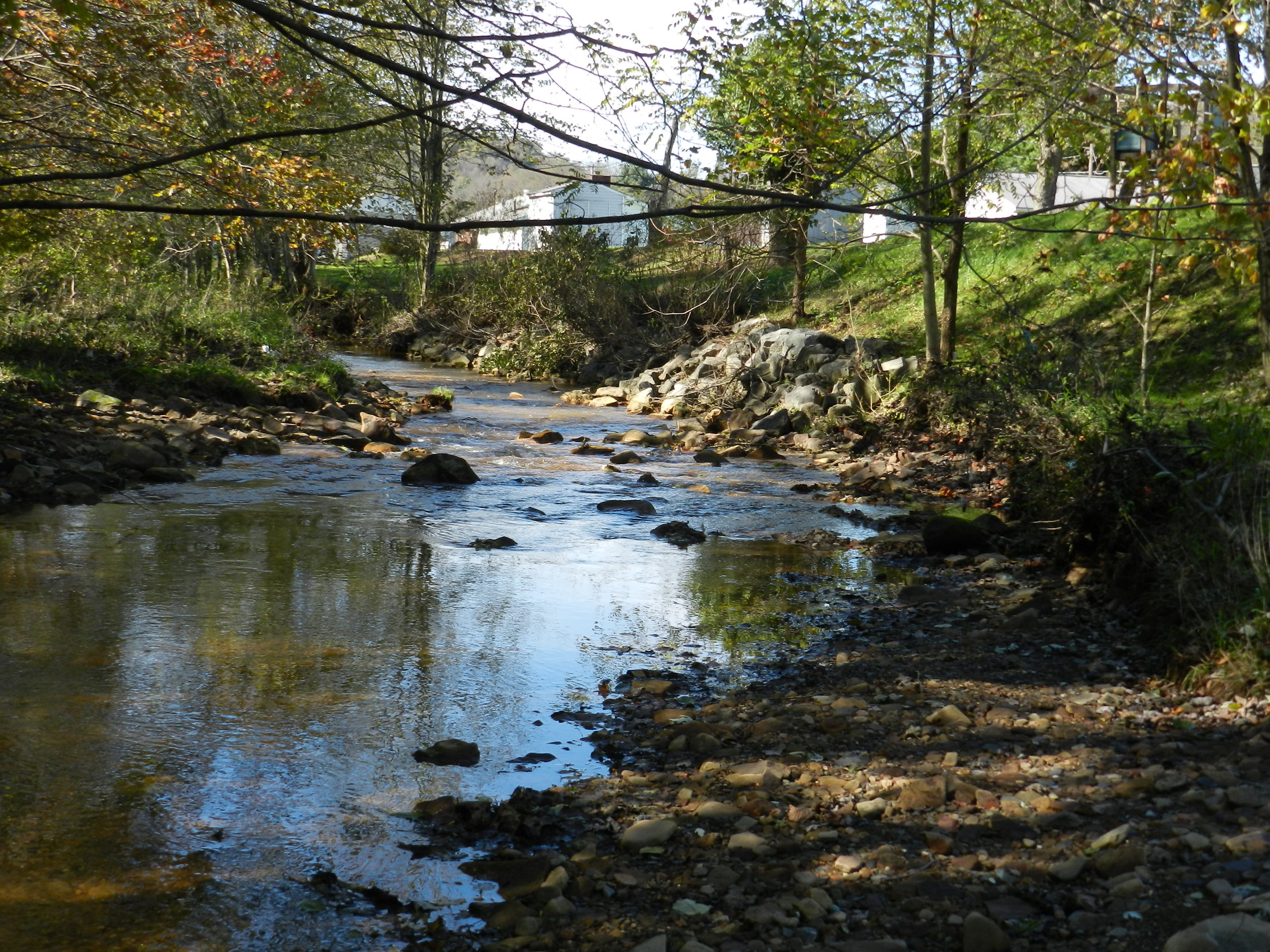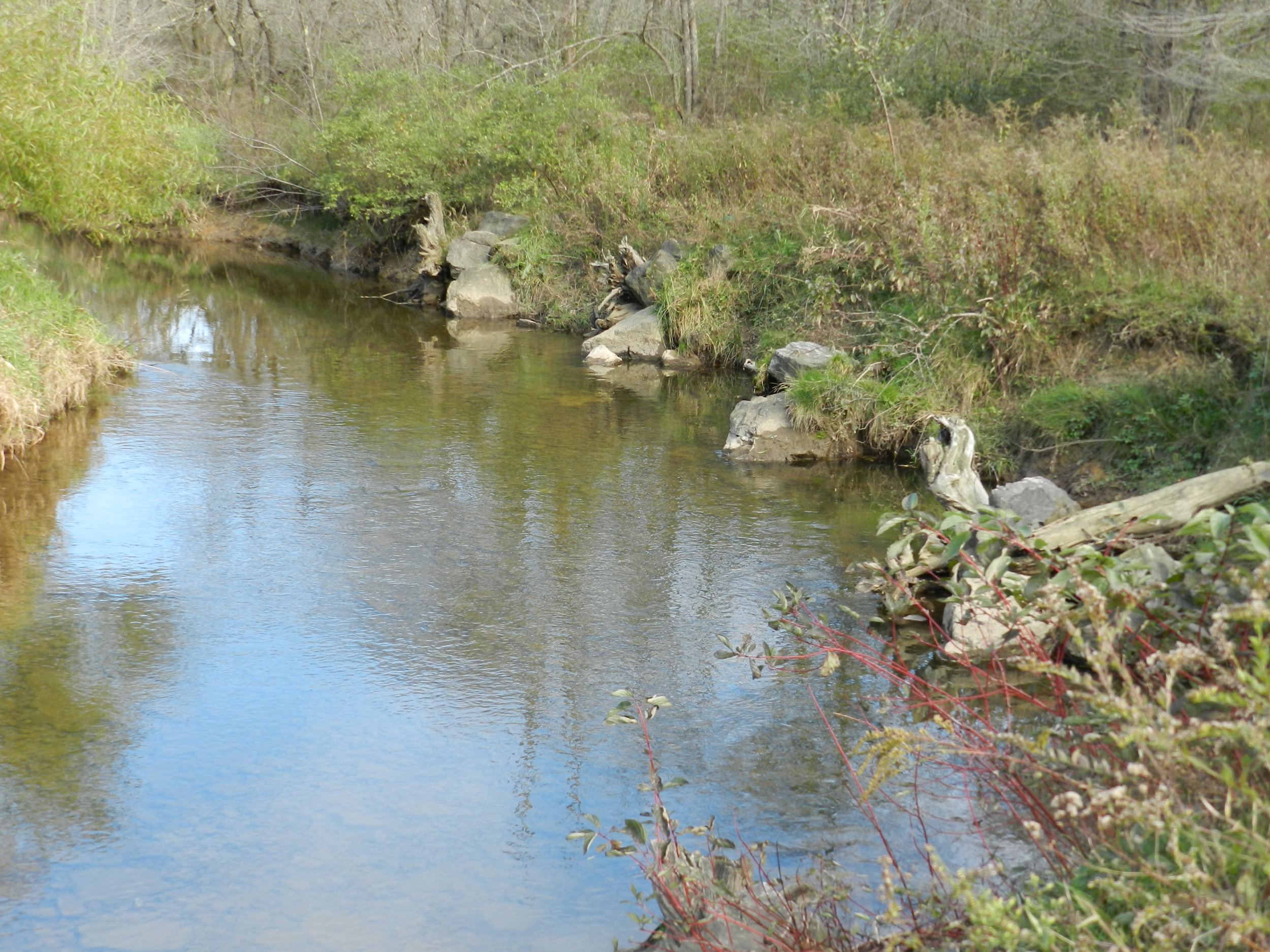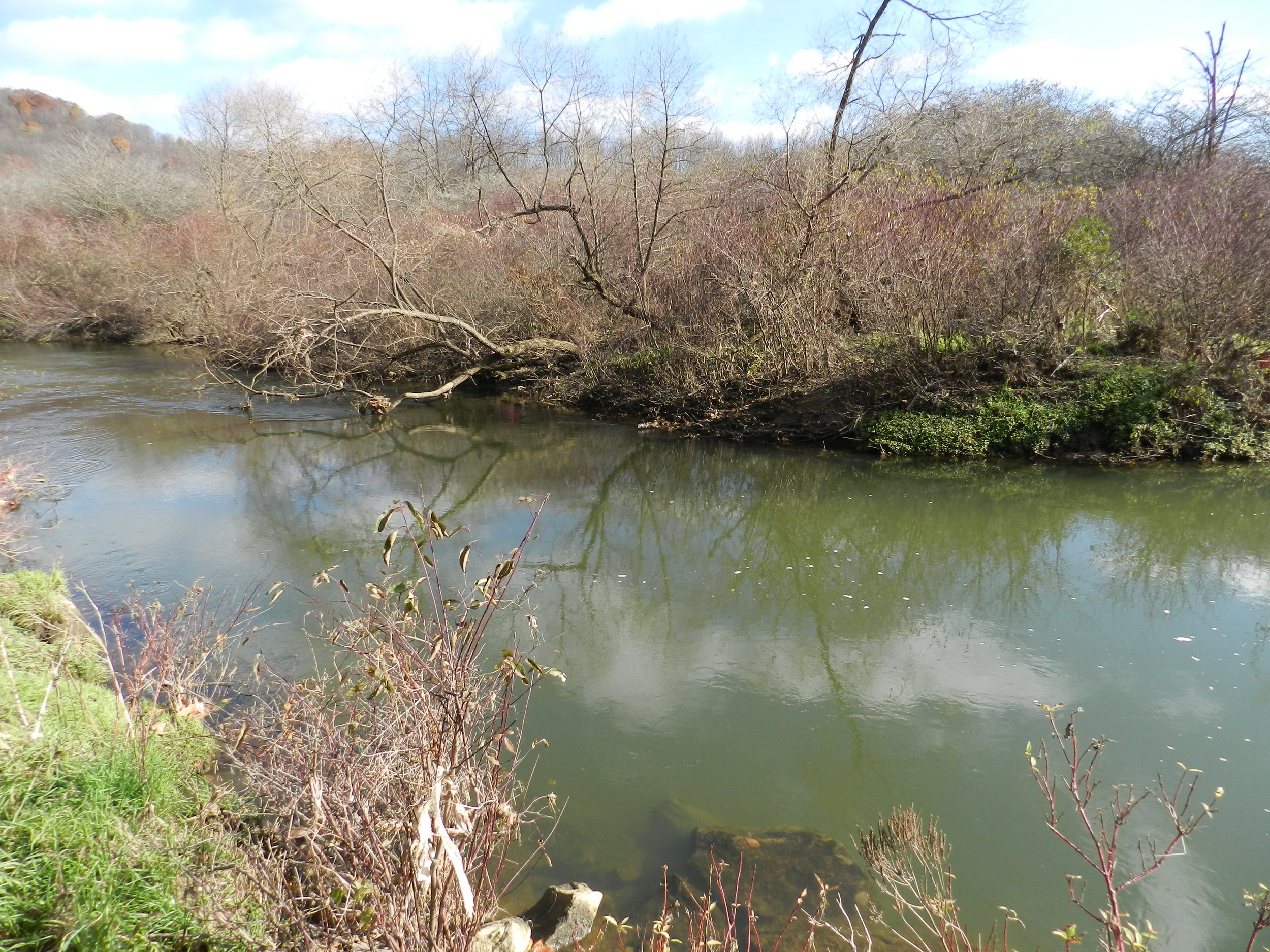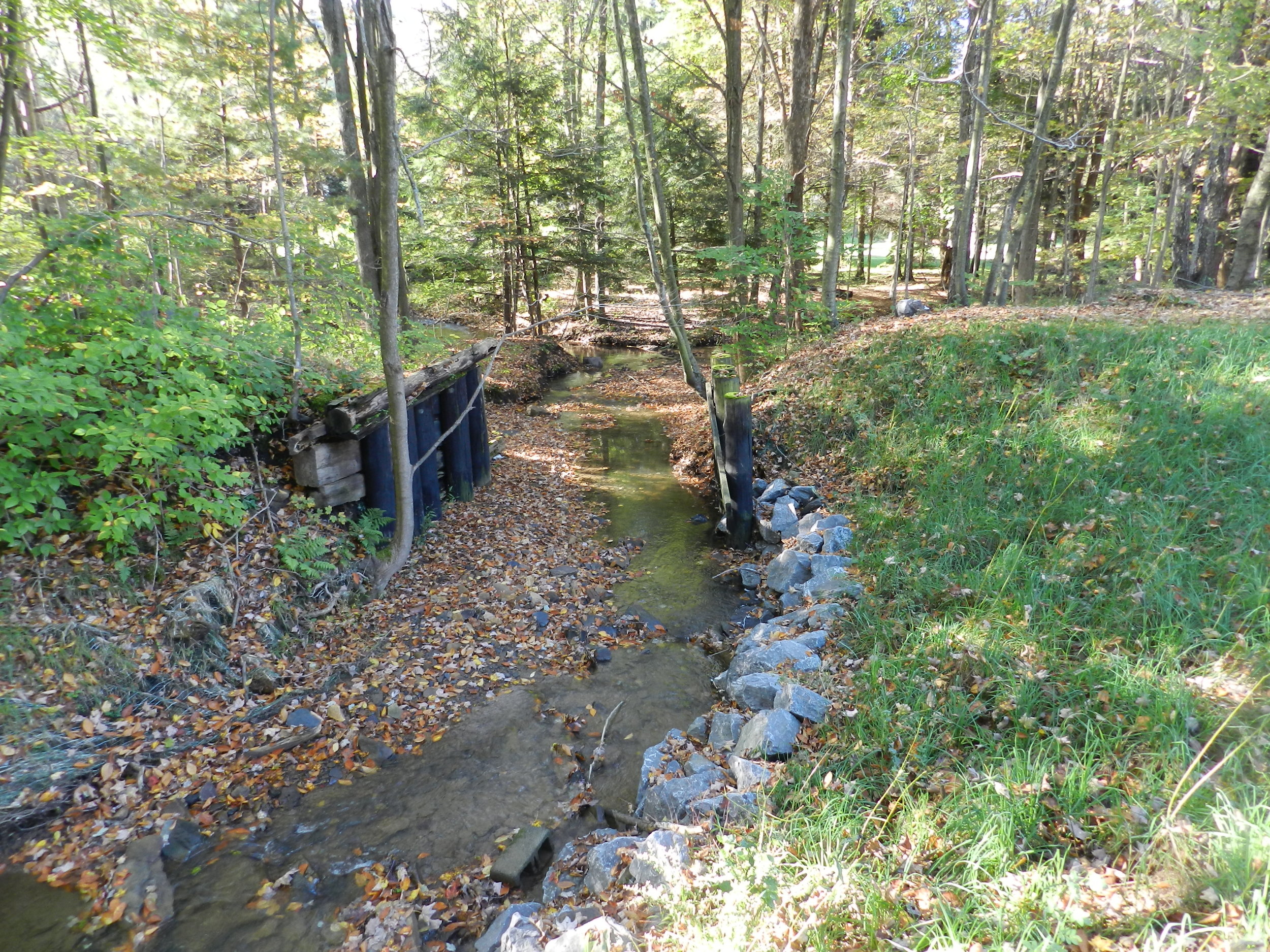Shoreline Stabilization Projects
Turtle Cove Shoreline- Glendale Lake
The shoreline at Turtle Cove had eroded banks that were battered by wave action from both wind and motorized boats. The erosion on these shorelines increased sedimentation into the lake and downstream into Clearfield Creek. In order to address this issue, the purpose of our Growing Greener project was to eliminate severely eroded shoreline, reduce sedimentation, improve aesthetics, provide fish habitat, maintain and improve fisherman access, and to improve water quality. Sawtooth and rock framed deflectors with root wads were incorporated into the shorelines to accomplish the goal.
Shoreline Before
During construction
Shoreline After
Emeigh run
Emeigh Run is located in Susquehanna Township, Cambria County and is a tributary to the West Branch Susquehanna River. In the past, the stream has been negatively impacted by mining, sewage, and encroachment. However, in recent years there has been documentation by PA Fish & Boat Commission and local citizens of a wild trout population in Emeigh Run, including downstream into the West Branch Susquehanna River. A streambank located on an unnamed tributary to Emeigh Run is showing signs of severe erosion. This is caused by high flows during storm events and the rainfall infiltrating upslope and seeping through the bank. The eroded streambank is adding sediment into Emeigh Run and eventually the West Branch Susquehanna River. Research has shown that sediment can cloud the water and make it difficult or impossible for aquatic plants to grow. Sediment can also destroy aquatic habitats. Water polluted with sediment becomes cloudy, preventing animals from seeing food. Murky water prevents natural vegetation from growing in the water. Sediment in stream beds disrupts the natural food chain by destroying the habitat where the smallest stream organisms live and causing massive declines in fish populations. Sediment can clog fish gills, reducing resistance to disease, lowering growth rates, and affecting fish egg and larvae development. The banks were stabilized with rocks, plantings, and by regrading the banks.
Bank Before
Bank Before
Bank After
Bank After












